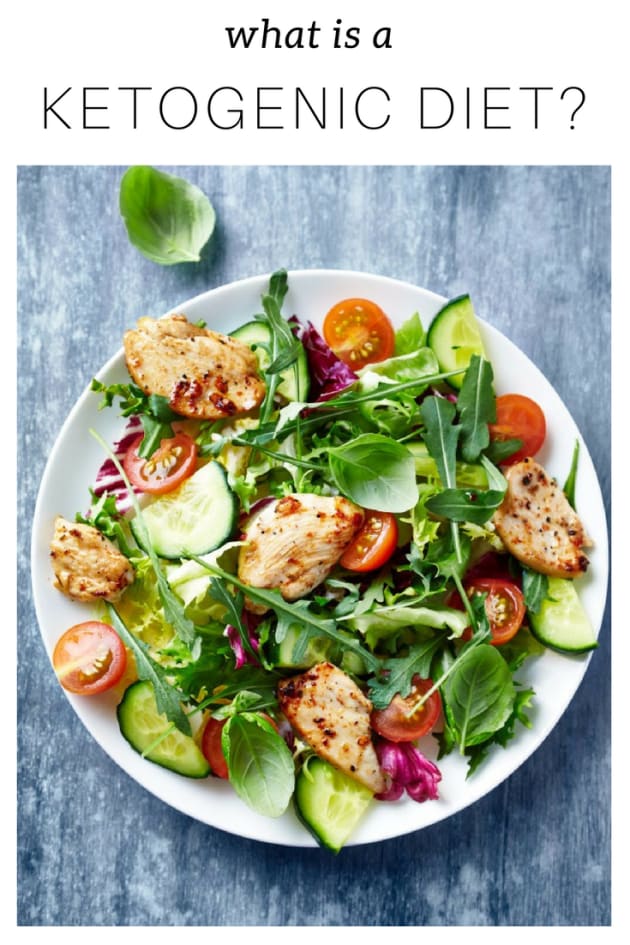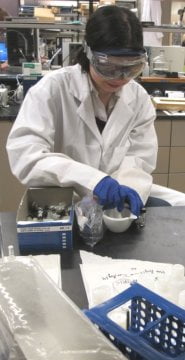
The ketogenic diet has been a hot topic of late. Depending on who you talk to, it is praised for its incredible weight loss results, criticised for being too restrictive, or condemned as dangerous, especially without medical supervision.
As with anything related to diet and nutrition, there’s a lot of conflicting (and misleading) information out there, so HuffPost Australia spoke to Clare Collins — professor of nutrition and dietetics at the University of Newcastle, accredited practising dietitian and spokesperson for DAA — about what the ketogenic diet is, how it works, and the pros and cons.
Table of Contents
ToggleWhat is a ketogenic diet?
A ketogenic eating pattern is very low in carbohydrates and moderate in protein, meaning a high percentage of total energy intake comes from fat found in dairy products and meat.
“A true ketogenic is one where carbohydrate intake is extremely low — usually less than 10 percent of your total energy intake,” Collins told HuffPost Australia.

How does a ketogenic diet work?
During times of severe energy restriction (such as during fasting or starvation), prolonged intense exercise, or when carbohydrate intake is reduced to around 50 grams per day or less, the body can enter ketosis.
This means that, rather than the body burning its primary fuel source, glycogen (a “complex carbohydrate, which in the human body is like petrol for a car”), the body must break down fats as its main source of fuel.
“If you can flip the switch and get the body to burn predominantly fat, then you produce these thing called ketone bodies, which can appear on your urine and they also come out on your breath. They actually smell like acetone, like nail polish remover essentially,” Collins said.
These ketone bodies are made by the liver from fatty acids, and are used up by the body’s tissues, muscles and the brain.

How many carbs can you eat and still be in ketosis?
“In terms of grams, it’s somewhere between 20 and 50 grams of carbohydrates a day. To give you an idea of how much that is, one typical big slice of bread from the supermarket has about 20 grams of carbohydrate.”
In a 50 gram carbohydrate diet, you might have a piece of fruit, a slice of bread and a small potato across the day.
“That’s it in terms of foods which are good sources of carbohydrate, and the rest would come from the incidentals you’d find in milk and salad-type vegetables. It’s extremely strict,” Collins said.
“The true, original ketogenic diet can be anywhere from 80 to 90 percent fat, so they really should be considered as medical nutrition therapy. To be used at that level, you really need close monitoring.”
How to know if you’re in ketosis
While it depends on “many individual variability”, the time it takes to burn fat and produce ketone bodies is typically about three days of carbohydrate restriction, or three days of severe total food restriction, Collins explained.
“The way you find out if you’re ketogenic (if you’re producing ketones) is you buy keto test strips at the chemist and you test your urine.”
The pros of a ketogenic diet
1. Effective short-term weight loss
According to the Dietitians Association of Australia (DAA), following a ketogenic diet will “undoubtedly result in short-term weight loss”, which probably comes down to a few factors:
- A reduction in total energy (kilojoule) intake;
- The depletion of liver and muscle glycogen stores and associated water;
- A reduced appetite (which is a side-effect of metabolising ketones, and also due to satiety associated with eating foods containing fat and protein).
“There’s even been a systematic review which has shown that if you put people on protein-sparing modified fasting diet (or a ketogenic diet where it’s high in fat and low in carbohydrates), they actually do report less hunger. So if you’re trying to lose weight, that’s good news,” Collins explained.
In other words, people who follow a ketogenic diet find they can tolerate hunger or kilojoule restriction better, compared to regular weight loss diets.
“I’ve conducted for the DAA a few years ago an evidence review for what approaches work for weight loss, and what we know from that, and the recent studies which have been done since this, is if you do cut out carbs for 1-6 months, they actually do lose more weight,” Collins said.
“But when you start lengthening it out for 1-5 years, which is about the longest these studies have gone, there’s no difference compared to a regular type of weight loss diet.”

2. May help to manage epilepsy in children
Although weight loss is what most people associate with a ketogenic diet, a low carb, high fat diet has traditionally been used since the 1920s to treat uncontrolled epilepsy in children — under medical supervision.
“When I was a paediatric dietitian and a parent came along with their child for a trial of the ketogenic diet under the supervision of a neurologist, it’s not without having tried everything else,” Collins said.
“If you have a child whose seizures are so severe and frequent, no medications are working, have frequent accidents and need to wear helmets to protect their heads, then of course you would try it.
“This is why it’s quite annoying how flippantly the ketogenic diet is being discussed as ‘hey, yeah, let’s go keto.'”
3. May have positive effects in the treatment of some cancers
There is growing interest in the effect of a ketogenic diet in patients with cancer, particularly brain cancer. However, at this point in time, much of the current evidence is observational, undertaken in small populations and in animals, so further research is needed before strong conclusions can be drawn.
“I will preface this with: do not try this at home,” Collins said.
“There is research, predominantly in animals studies, looking at the use of the ketogenic diet for optimising outcomes during cancer treatments. This is absolutely medical nutrition therapy at its highest level. If you throw yourself willy-nilly onto a ketogenic diet during cancer treatment, you risk becoming malnourished.
“What the research will see is start to identify whether what they’re seeing in animal studies apply to humans. Can you help people get a better response to chemotherapy or radiotherapy treatment by short periods of ketogenic-type diets or fasting approaches to diets? It’s very much ‘watch this space’ and do not try this yourself.”
The cons of a ketogenic diet
1. It can lack phytonutrients, fibre and B-vitamins
Due to the carbs found in many fruits, vegetables, whole grain and legumes, these healthy, high-fibre foods are extremely limited, which can lead to issues such as constipation and nutrient deficiencies.
“What concerns me about the people who are absolute purists on the ketogenic diet, is it means you’re cutting out groups of food which offer a lot of protection — namely vegetables providing phytonutrients and fibre which help with bowel cancer and managing body weight,” Collins said.
“I would still regard [the keto diet] as a medical nutrition therapy category, because it’s really easy to miss out on things like B vitamins (which comes packaged in nature’s best sources of carbohydrates: whole grains) and fibre.
“Please go and get personalised advice from an accredited practising dietitian who can advise you on fibre supplements, a multivitamin and monitor side effects. And get your overall health checked with a GP.”
As well as helping to fill us up, fibre is vital for a healthy gut, such as supporting the growth of ‘good’ bacteria and keeping the bowel lining healthy. With Australians on average already not meeting the recommended daily amounts (25g of fibre for women and 30g for men), a ketogenic diet will make it harder to meet these targets.
“Long term, coming back to a dietary pattern which allows them to eat whole grains, lots of vegetables and fruit is what’s best for their overall health and wellbeing,” Collins said.
“You don’t want to take yourself out of the frying pan and put yourself into the fire. If in the short term losing some weight is what’s really important to your health, then yes, a lower carbohydrate diet or a ketogenic diet may be of benefit. But it probably doesn’t need to be as low as 20 grams per day.”
3. It’s not sustainable
One thing the ketogenic diet ignores is that not all individuals will benefit from, or even require, the diet — nor is it sustainable for the long term.
As the DAA explained: “The key to maintaining a healthy weight in the long-term is an eating pattern that is sustainable over time. With this in mind, dietary recommendations should always be tailored to an individual — as everyone is unique, and what works for one person, may not work for another.”
“You’re not going to have much joy eating on a ketogenic diet. You’re going to have sticks of celery with cream cheese for snacks and bacon and eggs for breakfast, but there won’t be any warm toast or flavours from a range of vegetables, fruits and legumes,” Collins added.
Other short-term side effects of ketosis can include fatigue, bad breath, nausea and headache.
The take-home message
While a ketogenic diet may offer novel medical treatments, and weight loss benefits in the short-term (i.e. a few months), the effects of this diet in healthy individuals are not yet backed by sufficient evidence, meaning the long-term efficacy, safety and benefits are not yet known.
“It’s actually exciting that there may be some more medical nutrition advice we can give down the track, but it’s too early and too dangerous to throw out there that ‘ketogenic diet is the new cure-all,'” Collins said.
“We’re opening pandora’s box — and that needs to be monitored very closely and performed under medical supervision.”
If you are interested in adopting a ketogenic diet, do so under strict medical supervision.
[“source=huffingtonpost”]























